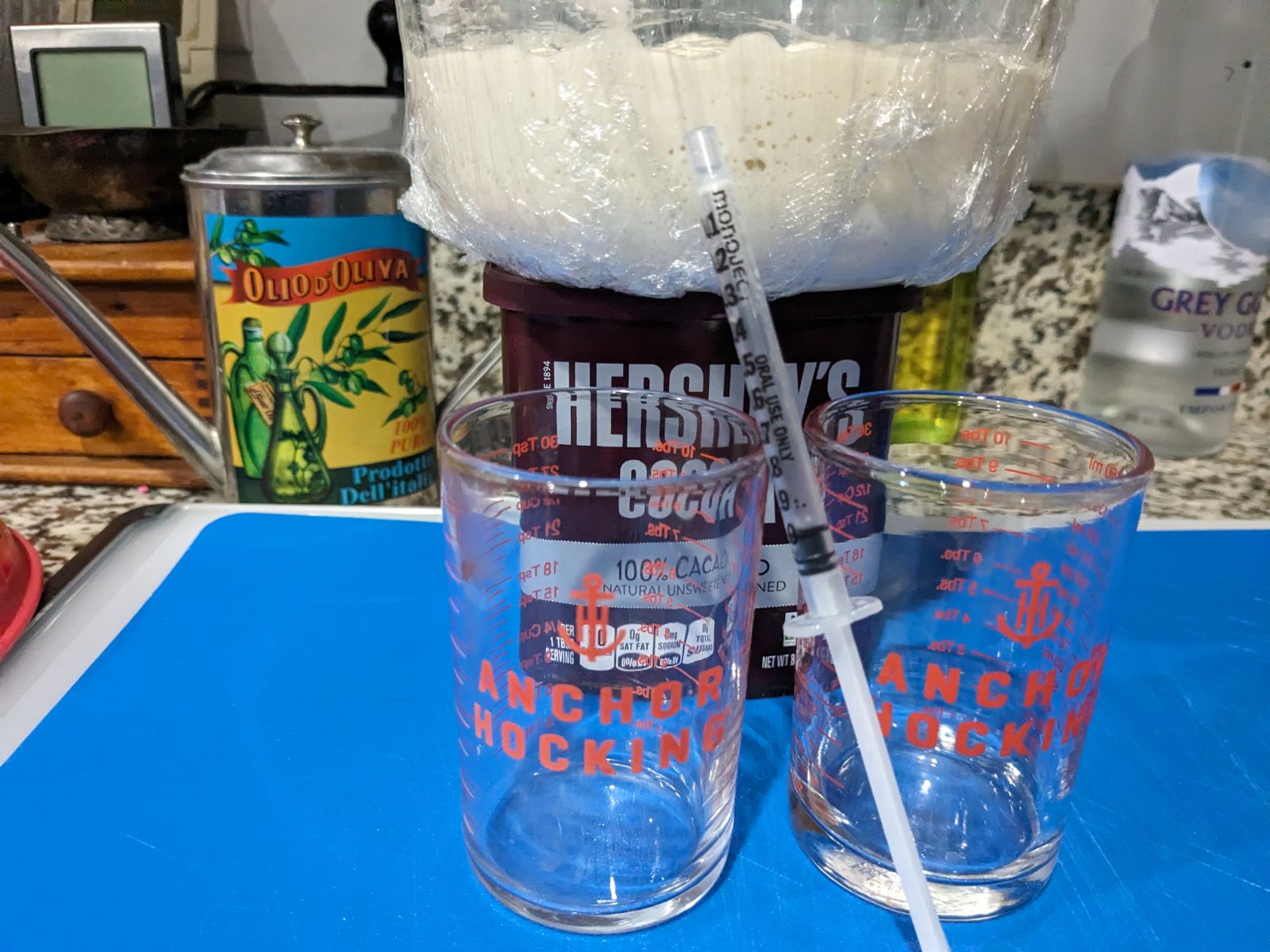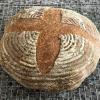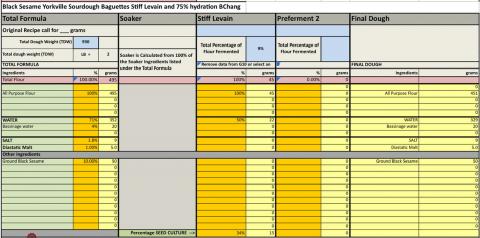I felt like baking baguettes this week and decided to do something just a bit different, so I present sourdough baguette noir. So the colour and flavour of these baguettes do not come from charcoal like baguette au charbon vegetal. No the colour comes from ground toasted black sesame powder that is added to the well developed dough at the end of mixing. This brings an interesting colour to both the crust and the crumb. The fat from the sesame seeds also cause the crumb to be softer and the crust to be thinner and super crisp compared to my usual SD baguettes. The nutty scent is evident as soon as the ground sesame seeds are added to the dough. Each time I did a coil fold I enjoyed that lovely scent. There is a nice subtle sesame flavour in the baguette.
Levain
starter 15 g
Water 22 g
AP flour 45 g
Final dough
AP flour 451 g
Water 329 g
Bassinage water 20 g
Salt 9 g
Diastatic malt 5.0 g
Ground Black Sesame 50 g
To make 50 g of ground black sesame add 7.1 g sugar and 42.9 g of black sesames to a grinder and grind until a paste develops. Can make extra but use about 6:1 ratio of toasted black sesame seeds to sugar since black sesame has a drying effect in the mouth that the small amount of sugar can balance out.
Overnight Levain build ferment 75°F 10-12 hours
78°F 9 hours to peak
In the morning, to your mixing bowl add water and diastatic malt to dissolve, then add levain. Use your spatula to cut the levain into small pieces. Next add AP flour and mix to combine. Allow to fermentolyse for 10 mins. Slap and fold x 100 then add salt and hold back water gradually working in until fully absorbed by massaging and then Rubaud kneading the dough, then slap and fold x 200. Once gluten well developed add ground black sesame, knead until well incorporated. Can also use your stand mixer.
Bulk Fermentation 82*F until aliquot jar shows 20% rise.
Do folds every 20 mins doing 3 folds
Could do cold retard at this point for up to overnight. (Aliquot jar 20% rise)
Divide and pre-shape rest for 15 mins
Shape en couche with final proof until aliquot jar shows 60% rise then (optional) cold retard shaped baguettes en couche for at least 15-30
minutes for easier scoring. I often do this for convenience as the oven is pre-heating.
Pre-heat oven 500*F after 30 mins add Silvia towel in pan with boiling water.
Transfer baguettes from couche to peel on parchment
Score each baguette and transfer to oven, bake on steel.
Bake with steam pouring 1 cup of boiling water to cast iron skillet dropping temperature to 480*F.
The baguettes are baked with steam for 13 mins. The steam equipment is removed venting the oven of steam. Transfer the baguettes from the baking steel to next rack completing baking directly on a rack to minimize the browning and thickening of the bottom crust. The oven is dropped to 450ºF but convection is turned on and the baguettes bake for 10 mins rotating them halfway. The baguettes are rotated again if needed and baked for another 3 mins to achieve a rich colour crust.
My index of bakes





















